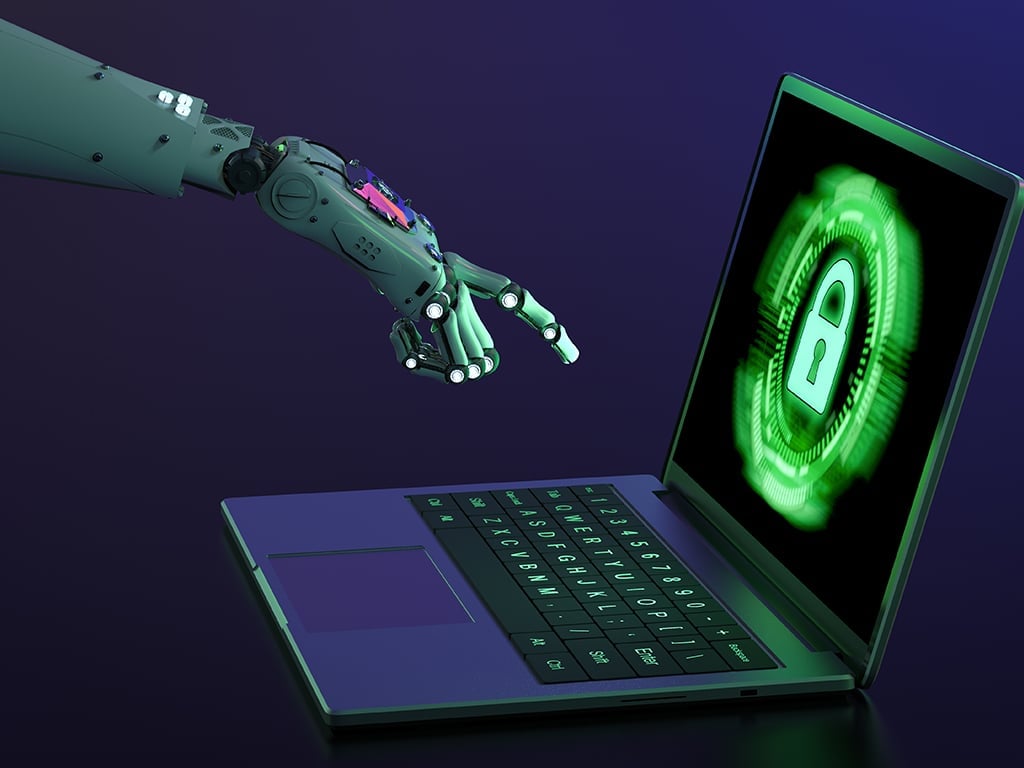The cybersecurity landscape today feels like a constant game of cat and mouse. Every time we think we’ve outpaced the attackers; they find new ways to exploit vulnerabilities. Enter artificial intelligence (AI) — a game-changer in this dynamic field. AI isn’t just about automating processes; it’s about making defenses smarter, faster, and more adaptive to ever-evolving threats.
In this article, I’ll Walk you through how AI is reshaping cybersecurity, the opportunities it unlocks, and the challenges we need to keep in mind. Let’s dive in.
What is AI in Cybersecurity?
At its core, AI in cybersecurity refers to the use of advanced technologies like machine learning, neural networks, and natural language processing to identify, analyze, and mitigate security threats. Unlike traditional systems, AI-driven tools are designed to learn and adapt over time, making them more effective at detecting patterns that might elude the human eye.
For instance, machine learning can sift through mountains of data to spot anomalies, while neural networks can analyze complex behaviors to predict and block attacks before they occur. Think of AI as your digital bodyguard, constantly on high alert.
Why AI is Essential for Cybersecurity
The sheer scale of modern cyber threats makes AI a necessity, not a luxury. Here’s why:
- Volume of Data: Businesses generate more data than ever before, making it impossible for human teams to analyze everything effectively.
- Sophistication of Attacks: Cybercriminals now use advanced tools, including AI, to launch complex attacks.
- Speed of Response: Traditional systems often react to threats after damage has been done. AI enables proactive detection and prevention.
Without AI, keeping up with the pace of today’s cyber threats would be like trying to empty a sinking boat with a teaspoon.
Key Applications of AI in Cybersecurity
AI is making waves across multiple areas of cybersecurity. Here are some of its most impactful applications:
- Threat Detection and Monitoring: AI systems excel at real-time monitoring, analyzing network traffic, and identifying anomalies that signal potential threats. This means quicker responses to malware, phishing attempts, and ransomware.
- Incident Response Automation: When a breach occurs, every second counts. AI-driven playbooks can automate responses, isolating affected systems and mitigating damage while freeing up human teams to focus on strategy.
- Fraud Prevention: From detecting unauthorized transactions to flagging suspicious account activity, AI’s ability to analyze behavioral patterns is invaluable in stopping fraud before it escalates.
- Securing IoT Devices: The Internet of Things (IoT) has opened up a new frontier for cyber threats. AI can protect these devices by monitoring and managing their vulnerabilities.
- Network Security: AI tools can analyze vast amounts of network traffic to identify and neutralize advanced persistent threats (APTs) and Distributed Denial of Service (DDoS) attacks.
Advantages of AI in Cybersecurity
When used effectively, AI can:
- Detect threats proactively: AI’s predictive capabilities help identify risks before they’re exploited.
- Reduce false positives: By understanding patterns better, AI reduces unnecessary alerts, allowing teams to focus on real issues.
- Scale defenses: Whether it’s a small business or a global enterprise, AI systems can handle large volumes of data seamlessly.
- Save time: Automation speeds up processes that would take humans hours, if not days, to complete.
Challenges and Risks of AI in Cybersecurity
AI isn’t a silver bullet. It comes with its own set of challenges:
- Cost and Complexity: Implementing AI tools can be expensive and resource-intensive.
- Adversarial AI: Just as defenders use AI, attackers do too. For example, hackers can create AI-driven phishing campaigns that are incredibly convincing.
- Bias and Accuracy: AI models are only as good as the data they’re trained on. Poor data quality can lead to inaccurate decisions.
- Ethical Concerns: Balancing AI’s power with privacy rights is a tightrope walk.
AI vs. Cybercriminals: The Arms Race
Here’s the truth: Cybersecurity is an arms race, and both sides are leveraging AI. Attackers are using AI to create smarter malware, generate deepfake content, and automate phishing campaigns. Meanwhile, defenders are deploying AI to counter these very tactics. It’s a constant back-and-forth, and the winner is often determined by who’s innovating faster.
Emerging Trends in AI and Cybersecurity
Looking ahead, a few trends stand out:
- AI-Driven Security Operations Centers (SOCs): Expect more organizations to adopt AI-powered SOCs that combine human expertise with machine efficiency.
- Quantum Computing: As quantum computing becomes mainstream, AI will need to adapt to address the new security challenges it brings.
- Collaborative AI: The future lies in combining AI tools with human oversight, creating a partnership that maximizes strengths on both sides.
Practical Tips for Adopting AI in Cybersecurity
For organizations considering AI, here are some practical steps:
- Start small with scalable tools.
- Ensure proper training for teams to manage AI systems effectively.
- Regularly update and audit AI models to maintain accuracy.
- Balance automation with human oversight to avoid over-reliance.
AI is transforming cybersecurity, offering solutions that are faster, smarter, and more adaptive than ever before. But like any tool, its effectiveness depends on how it’s used. As cyber threats continue to evolve, so must our defenses — blending AI’s capabilities with human ingenuity to create a safer digital world.
The race is on, and there’s no room to sit on the sidelines. Whether you’re a tech-savvy business owner or just someone curious about the future, understanding AI’s role in cybersecurity is key to staying ahead in this ever-changing game.
About the Author
 Randy Hall, CEO of Securafy Inc., has over 40 years of IT experience, excelling in roles like network engineer and CIO. An accomplished entrepreneur, he founded Haltronics Inc., built and sold companies like Worldlan Technology, and scaled smaller firms. At Securafy, recognized as the 2024 Most Trusted MSP in North America by the Soteria Award, Randy drives innovation and excellence in cybersecurity, compliance, and managed services. A frequent speaker at IT events, he has worked with businesses worldwide, from SMBs to large enterprises and the U.S. government.
Randy Hall, CEO of Securafy Inc., has over 40 years of IT experience, excelling in roles like network engineer and CIO. An accomplished entrepreneur, he founded Haltronics Inc., built and sold companies like Worldlan Technology, and scaled smaller firms. At Securafy, recognized as the 2024 Most Trusted MSP in North America by the Soteria Award, Randy drives innovation and excellence in cybersecurity, compliance, and managed services. A frequent speaker at IT events, he has worked with businesses worldwide, from SMBs to large enterprises and the U.S. government.
Randy Hall can be reached online on LinkedIn and at our company website www.securafy.com.

